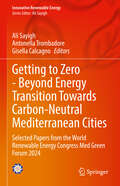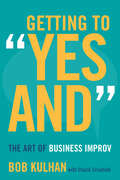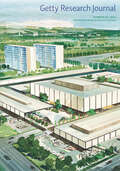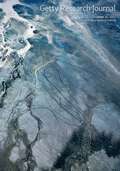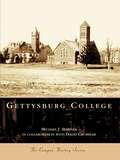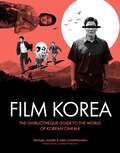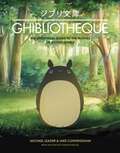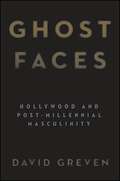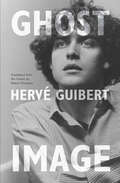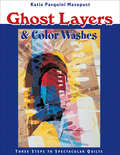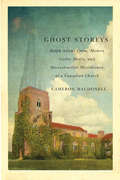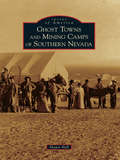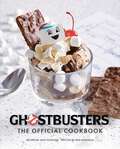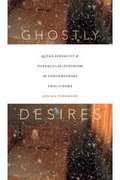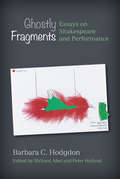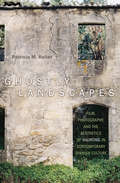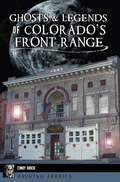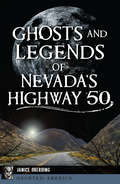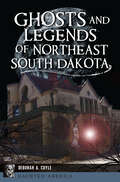- Table View
- List View
Getting to Zero - Beyond Energy Transition Towards Carbon-Neutral Mediterranean Cities: Selected Papers from the World Renewable Energy Congress Med Green Forum 2024 (Innovative Renewable Energy)
by Ali Sayigh Antonella Trombadore Gisella CalcagnoThis book contains selected papers from the World Renewable Energy Congress and Network Forum's seventh edition of the biannual Med Green Forum (MGF2024) that highlight opportunities for energy transition based on the principles of efficiency, urban/building integration, and ecology. Contributions explore possible carbon-neutral solutions, technologies, strategies, processes, and policies for Mediterranean cities. The book addresses the transformation in the unique socio-climatic and cultural context of the Mediterranean basin, cities, and architecture, a transversal topic deeply related to social dynamics and new energy landscapes.
Getting to “Yes And”: The Art of Business Improv
by Chuck Crisafulli Bob KulhanAmidst the deluge of advice for businesspeople, there lies an overlooked tool, a key to thriving in today's fast-paced, unpredictable environment: improvisation. In Getting to "Yes And" veteran improv performer, university professor, CEO, and consultant Bob Kulhan unpacks a form of mental agility with powers far beyond the entertainment value of comedy troupes. Drawing on principles from cognitive and social psychology, behavioral economics, and communication, Kulhan teaches readers to think on their feet and approach the most typical business challenges with fresh eyes and openness. He shows how improv techniques such as the "Yes, and" approach, divergent and convergent thinking, and focusing on being present can translate into more productive meetings, swifter decisions, stronger collaboration, positive conflict resolution, mindfulness, and more. Moving from the individual to the organizational level, Kulhan compiles time-tested teaching methods and training exercises into an instrumental guide that readers can readily implement as a party of one or a company of thousands.
Getty Research Journal, volume 15 number 1 (2022)
by Getty Research JournalThis is volume 15 issue 1 of Getty Research Journal. The Getty Research Journal presents peer-reviewed articles on the visual arts of all cultures, regions, and time periods. Topics relate to the Getty’s collections, initiatives, and broad research interests. The journal welcomes a diversity of perspectives and methodological approaches, and seeks to include work that expands narratives on global culture.
Getty Research Journal, volume 16 number 1 (2022)
by Getty Research JournalThis is volume 16 issue 1 of Getty Research Journal. The Getty Research Journal presents peer-reviewed articles on the visual arts of all cultures, regions, and time periods. Topics relate to the Getty’s collections, initiatives, and broad research interests. The journal welcomes a diversity of perspectives and methodological approaches, and seeks to include work that expands narratives on global culture.
Getty Research Journal, volume 17 number 1 (2023)
by Getty Research JournalThis is volume 17 issue 1 of Getty Research Journal. The Getty Research Journal presents peer-reviewed articles on the visual arts of all cultures, regions, and time periods. Topics relate to the Getty’s collections, initiatives, and broad research interests. The journal welcomes a diversity of perspectives and methodological approaches, and seeks to include work that expands narratives on global culture.
Getty Research Journal, volume 18 number 1 (2023)
by Getty Research JournalThis is volume 18 issue 1 of Getty Research Journal. The Getty Research Journal presents peer-reviewed articles on the visual arts of all cultures, regions, and time periods. Topics relate to the Getty’s collections, initiatives, and broad research interests. The journal welcomes a diversity of perspectives and methodological approaches, and seeks to include work that expands narratives on global culture.
Gettysburg College
by Michael J. Birkner David CrumplarGettysburg College is the oldest Lutheran affiliated college in the United States. At its founding in 1832--a time of social ferment and advancing democracy--college leaders emphasized a liberal arts mission. Pennsylvania College, as it was known until 1919, numbers among its graduates many clergy, lawyers, and physicians, as well as politicians, social gospel advocates, scientists, business executives, and university presidents. Although the college has grown considerably since World War II, its mission has remained consistent: devotion to the pursuit of truth and active citizenship. Through historic photographs, Gettysburg College documents significant themes in the college's history: an expanding campus, the emergence and influence of intercollegiate athletic teams and social fraternities, curricular change, and key national events that affected the college, none of the latter more important than the Battle of Gettysburg and two world wars. Always respected for its academic program, Gettysburg College has in the past generation diversified its faculty and student body, expanded its interdisciplinary programs, and gained in reputation as a leading national liberal arts college.
Ghibliotheque Film Korea: The essential guide to the wonderful world of Korean cinema
by Jake Cunningham Michael LeaderExplore the magical, mysterious world of Korean cinema, in this new book from the authors of Ghibliotheque.From smash hits such as Parasite to cult favourites Oldboy, The Handmaiden and Train to Busan, Korean cinema is a hotbed of creative talent and the force behind the most exciting, captivating filmmaking in the world right now.In this essential guide to the country's cinematic story, Michael Leader and Jake Cunningham – authors and hosts of the hit podcast Ghibliotheque – guide you through the must-see films from a century of Korean movies.Exploring 30 movies, from the breakout hits to deeper cuts, hidden gems and future classics, Film Korea is a gateway to everything you need to know about the white-hot world of Korean cinema. Combining reviews and director biographies with recommended further viewing and a catalogue of beautiful film stills and movie posters, this is your one-stop guide to an incredible, captivating artform.
Ghibliotheque: The Unofficial Guide to the Movies of Studio Ghibli
by Jake Cunningham Michael LeaderRevised and updated - includes Miyazaki's new masterpiece, The Boy and the Heron.Explore the films of magical Japanese animation masters Studio Ghibli in this film-by-film celebration for newcomers and long-time fans alike.Ghibliotheque reviews each Studio Ghibli movie in turn, in the voice of expert and newcomer. The lively text delves into production details, themes, key scenes and general reviews, as well as Ghibli-specific information. It's beautifully illustrated with stills and posters from each movie.Written by the hosts of the acclaimed Ghibliotheque podcast, this is the first and last word on the films of Studio Ghibli.
Ghibliotheque: The Unofficial Guide to the Movies of Studio Ghibli
by Jake Cunningham Michael LeaderRevised and updated - includes Miyazaki's new masterpiece, The Boy and the Heron.Explore the films of magical Japanese animation masters Studio Ghibli in this film-by-film celebration for newcomers and long-time fans alike.Ghibliotheque reviews each Studio Ghibli movie in turn, in the voice of expert and newcomer. The lively text delves into production details, themes, key scenes and general reviews, as well as Ghibli-specific information. It's beautifully illustrated with stills and posters from each movie.Written by the hosts of the acclaimed Ghibliotheque podcast, this is the first and last word on the films of Studio Ghibli.
Ghost Channels: Paranormal Reality Television and the Haunting of Twenty-First-Century America (Horror and Monstrosity Studies Series)
by Amy LawrenceThrough American history, often in times of crisis, there have been periodic outbreaks of obsession with the paranormal. Between 2004 and 2019, over six dozen documentary-style series dealing with paranormal subject matter premiered on television in the United States. Combining the stylistic traits of horror with earnest accounts of what are claimed to be actual events, “paranormal reality” incorporates subject matter formerly characterized as occult or supernatural into the established category of reality TV. Despite the high number of programs and their evident popularity, paranormal reality television has to date received little critical attention. Ghost Channels: Paranormal Reality Television and the Haunting of Twenty-First-Century America provides an overview of the paranormal reality television genre, its development, and its place in television history. Conducting in-depth analyses of over thirty paranormal television series, including such shows as Ghost Hunters, Celebrity Ghost Stories, and Long Island Medium, author Amy Lawrence suggests these programs reveal much about Americans’ contemporary fears. Through her close readings, Lawrence asks, “What are these shows trying to tell us?” and “What do they communicate about contemporary culture if we take them seriously and watch them closely?” Ridiculed by nearly everyone, paranormal reality TV shows—with their psychics, ghost hunters, and haunted houses—provide unique insights into contemporary American culture. Half-horror, half-documentary realism, these shows expose deep-seated questions about class, race, gender, the value of technology, the failure of institutions, and what it means to be American in the twenty-first century.
Ghost Faces: Hollywood and Post-Millennial Masculinity (SUNY series, Horizons of Cinema)
by David GrevenFinalist for the 2017 Lambda Literary Award in the LGBT Nonfiction category presented by the Lambda Literary FoundationGhost Faces explores the insidious nature of homophobia even in contemporary Hollywood films that promote their own homo-tolerance and appear to destabilize hegemonic masculinity. Reframing Laura Mulvey's and Gilles Deleuze's paradigms and offering close readings grounded in psychoanalysis and queer theory, David Greven examines several key films and genre trends from the late 1990s forward. Movies considered range from the slasher film Scream to bromances and beta male comedies such as I Love You, Man to dramas such as Donnie Darko and 25th Hour to Rob Zombie's remake of the horror film Halloween. Greven also traces the disturbing connections between torture porn found in such films as Hostel and gay male Internet pornography.
Ghost Image
by Hervé GuibertGhost Image is made up of sixty-three short essays—meditations, memories, fantasies, and stories bordering on prose poems—and not a single image. Hervé Guibert’s brief, literary rumination on photography was written in response to Roland Barthes’s Camera Lucida, but its deeply personal contents go far beyond that canonical text. Some essays talk of Guibert’s parents and friends, some describe old family photographs and films, and spinning through them all are reflections on remembrance, narcissism, seduction, deception, death, and the phantom images that have been missed. Both a memoir and an exploration of the artistic process, Ghost Image not only reveals Guibert’s particular experience as a gay artist captivated by the transience and physicality of his media and his life, but also his thoughts on the more technical aspects of his vocation. In one essay, Guibert searches through a cardboard box of family portraits for clues—answers, or even questions—about the lives of his parents and more distant relatives. Rifling through vacation snapshots and the autographed images of long-forgotten film stars, Guibert muses, “I don’t even recognize the faces, except occasionally that of an aunt or great-aunt, or the thin, fair face of my mother as a young girl.” In other essays, he explains how he composes his photographs, and how—in writing—he seeks to escape and correct the inherent limits of his technique, to preserve those images lost to his technical failings as a photographer. With strains of Jean Genet and recurring themes that speak to the work of contemporary artists across a range of media, Guibert’s Ghost Image is a beautifully written, melancholic ode to existence and art forms both fleeting and powerful—a unique memoir at the nexus of family, memory, desire, and photography.
Ghost Layers & Color Washes: Three Steps to Spectacular Quilts
by Katie Pasquini MasopustFollow this innovative 3-step technique for adding layers of visual interest to representational quilts—from the author of Artful Log Cabin Quilts.Simple steps will take your quilts to an exciting new level! Katie walks you through making a simple block using her 3 steps: Make a design based on a photo or drawing. Add a “ghost” layer that is lighter or darker than the base blocks colors. Create a color wash that allows use of even more colors in the quilt. Blocks are constructed using raw-edge or turned-edge applique.Includes Katie’s Seven Step Program for choosing perfect fabric combinations. Full-color photos of incredible quilts by Katie and her students will inspire you to let the magic begin!
Ghost Light: An Introductory Handbook For Dramaturgy
by Michael Mark ChemersGhost Light: An Introductory Handbook for Dramaturgy offers useful and entertaining answers to the confounding questions: “What, exactly, is dramaturgy, and what does a dramaturg do?” According to Michael Mark Chemers, dramaturgs are the scientists of the theater world—their primary responsibility is to query the creative possibilities in every step of the production process, from play selection to costume design, and then research the various options and find ways to transform that knowledge into useful ideas. To say that dramaturgs are well-rounded is an understatement: those who choose this profession must possess an acute aesthetic sensibility in combination with an extensive knowledge of theater history and practice, world history, and critical theory, and they must be able to collaborate with every member of the creative team and theater administration.
Ghost Storeys: Ralph Adams Cram, Modern Gothic Media, and Deconstructive Microhistory at a Canadian Church
by Cameron MacdonellMost studies of modern Gothic media assume that, beyond the 1830s, modern Gothic architecture and literature had very little in common. The work of Ralph Adams Cram (1863–1942), America’s most prolific Gothic Revival architect and an author of ghost stories, challenges that assumption. The first interdisciplinary study of Cram’s aesthetics, Cameron Macdonell’s Ghost Storeys deconstructs the boundaries of Gothic architecture and literature through a microhistory of St Mary’s Anglican Church in Walkerville, Ontario. Focusing on Cram and the church’s main patron, Edward Walker (1851–1915), Macdonell explores the intricate intersections of Gothic aesthetics, architectural ethics, literature, theology, cultural values, and community construction in an Edwardian-era company town. When Walker commissioned the church, he believed that its economy of salvation could save him from the syphilis that afflicted his body and stained his soul. However, while implementing that economy, Cram, whose architectural theory, social commentary, and ghost stories were pessimistic about reviving the Gothic in the modern world, also created an architecture haunted by the sickness of humanity. Painstakingly researched and lavishly illustrated, Ghost Storeys redefines the allegorical relationship between a marginalized church and the Gothic Revival movement as a global interdisciplinary phenomenon.
Ghost Towns and Mining Camps of Southern Nevada (Images of America)
by Shawn Hall&“[A] photo-packed look at Southern Nevada&’s boom-and-bust civic casualties&” (Las Vegas Review-Journal). Ghost towns and mining camps are the last remaining vestiges of the Old West; there is a mystique surrounding these places that has made exploring them a pastime for many in the western United States. Nevada has more than a thousand of these boom-and-bust towns. Some are completely abandoned, while some still struggle to survive and even serve as county seats. Sadly, these wonderful places, including those covered in this volume, are constantly in danger from vandalism and neglect. Many ghost towns and mining camps have been destroyed or damaged needlessly, and those who are captivated by their charm must protect these windows into history so that they survive for future generations. Includes photos! &“Few folks know as much about Nevada ghost towns as author Shawn Hall.&” —Nevada Appeal
Ghost Towns of Route 66
by Jim HinckleyExplore the mystery and beauty of historic ghost towns from Illinois to California with this gorgeously illustrated guide to America’s favorite highway.The quintessential boom-and-bust highway of the American West, Route 66 once hosted a thriving array of boom towns built around oil wells, railroad stops, cattle ranches, resorts, stagecoach stops, and gold mines. Join Route 66 expert Jim Hinckley as he tours more than twenty-five ghost towns, rich in stories and history, complemented by gorgeous sepia-tone and color photography by Kerrick James. Also includes directions and travel tips for your ghost-town explorations along Route 66.
Ghostbusters: (ghostbusters Film, Original Ghostbusters, Ghostbusters Movie)
by Erik Burnham Jenn FujikawaA Simon & Schuster eBook. Simon & Schuster has a great book for every reader.
Ghostly Desires: Queer Sexuality and Vernacular Buddhism in Contemporary Thai Cinema
by Arnika FuhrmannThrough an examination of post-1997 Thai cinema and video art Arnika Fuhrmann shows how vernacular Buddhist tenets, stories, and images combine with sexual politics in figuring current struggles over notions of personhood, sexuality, and collective life. The drama, horror, heritage, and experimental art films she analyzes draw on Buddhist-informed conceptions of impermanence and prominently feature the motif of the female ghost. In these films the characters' eroticization in the spheres of loss and death represents an improvisation on the Buddhist disavowal of attachment and highlights under-recognized female and queer desire and persistence. Her feminist and queer readings reveal the entangled relationships between film, sexuality, Buddhist ideas, and the Thai state's regulation of heteronormative sexuality. Fuhrmann thereby provides insights into the configuration of contemporary Thailand while opening up new possibilities for thinking about queer personhood and femininity.
Ghostly Fragments: Essays on Shakespeare and Performance
by Barbara C. HodgdonGhostly Fragments gathers the essays of the late Barbara C. Hodgdon, a renowned scholar of Shakespeare and performance studies. Her influential publications over thirty years reflected a remarkable intelligence, wit, and originality, as did her lectures and conference papers. Richard Abel and Peter Holland have selected essays that represent the wide sweep of Hodgdon’s scholarship, including unpublished pieces and those from hard-to-access sources. The essays reveal a thinker and writer who grows more self-reflective over time, with a distinctive, engaging, often wryly humorous voice that is accessible even to nonspecialist readers. Following a general introduction by Peter Holland, the book’s five subsections (Teaching Shakespeare, Analyzing Stage Performances, Editing Shakespeare Texts, Analyzing Shakespeare Films, and “Shopping” in the Archives) are introduced in turn by scholars Miriam Gilbert, W.B. Worthen, Margaret Jane Kidnie, Richard Abel, and Pascale Aebischer. Collectively, the pieces confirm the originality and élan of Hodgdon’s thinking and writing over time, and reveal her as a natural essayist and stylist, with a distinctive engaging voice. The collection is unique in not only bringing together so much of Hodgdon's work in one place (with an extensive bibliography of her published work) but also in demonstrating how groundbreaking and influential that work has been in the field.
Ghostly Landscapes
by Patricia M. KellerIn Ghostly Landscapes, Patricia M. Keller analyses the aesthetics of haunting and the relationship between ideology and image production by revisiting twentieth-century Spanish history through the camera's lens. Through its vision she demonstrates how the traumatic losses of the Spanish Civil War and their systematic denial and burial during the fascist dictatorship have constituted fertile territory for the expressions of loss, uncanny return, and untimeliness that characterize the aesthetic presence of the ghost.Examining fascist documentary newsreels, countercultural art films from the Spanish New Wave, and conceptual landscape photographs created since the transition to democracy, Keller reveals how haunting serves to mourn loss, redefine space and history, and confirm the significance of lives and stories previously hidden or erased. Her richly illustrated book constitutes a significant reevaluation of fascist and post-fascist Spanish visual culture and a unique theorization of haunting as an aesthetic register inextricably connected to the visual and the landscape.
Ghosts & Legends of Colorado’s Front Range (Haunted America)
by Cindy BrickStunning natural wonders and bustling cities make Colorado's Front Range one of the country's best places to live, but its rowdy past left some residents unable to quit the state--even in death. Outside Fort Collins, many a startled visitor spies grisly shadows hanging from the notorious Hell Tree. A reputed murderer stalks the Greeley Courthouse near where he was lynched for his alleged crimes. The disembodied heads of two vengeful banditos float through the basement of the Capitol Building in Denver. And the Broadmoor Hotel of Colorado Springs plays nightly host to a mysterious phantom lady. Author Cindy Brick reveals these and more gripping tales of the Front Range's spectral history.
Ghosts and Legends of Nevada's Highway 50 (Haunted America)
by Janice OberdingThe 287-mile stretch of highway that runs east to west across Nevada's desert is billed as the "Loneliest Road in America." But those who explore it find there is plenty to discover along the way in the towns of Austin, Eureka, Ely, Fallon and Fernley. Every one of these places has its own unique history, ghosts and stories to tell. From the sordid lynching of Richard Jennings to the humorous legend about a famous sack of flour, author Janice Oberding treks across Highway 50 seeking spirits and uncovering the tales of Singing Sand Mountain, the Red-Headed Giants, the Giroux Mine Disaster and many more.
Ghosts and Legends of Northeast South Dakota (Haunted America)
by Deborah CuyleGhouls of the Glacial Lakes and Prairie Region Buried in the annals of the region are torrid tales, disasters and the unexplained. At historic Fort Sisseton, the old hanging tree and a phantom buffalo soldier are just a few of its spectral stories. Partygoers from over a century ago still linger at Aberdeen's Easton Castle. De Smet's historic Laura Ingalls Wilder homestead attracts thousands of visitors annually, many unaware of its familial spirts. Locals in Watertown still debate whether the apparition at the Goss Opera House is that of a traveling performer named Annie or murder victim Maud Alexander, who was set on fire by her own son. Victims of a 1940 train wreck between Milbank and Marvin seemingly never left the scene of the accident. And Captain Luff of The Muskegon disaster can be seen mourning on the banks of Big Stone Lake. Author Deborah Cuyle chronicles the area's most fascinating and perplexing lore.
